If You Were to Ride the Tour de France Route – Part 2
I tried arranging a rental as if I were going to ride Mont Ventoux.
The Tour de France, a 23-day journey that circles France by bike in the peak of summer, is finally heading into its decisive final stages. This is the second part of a two-part series reporting on cycling in France directly from the ground. This time, we dive into a hands-on investigation of renting a performance road bike—seriously planning as if we were going to ride ourselves.
Is it easy and reliable to arrange a rental? How much does it actually cost? And what should you keep in mind if you really end up riding in France? The route I planned is the finish of Stage 16: Mont Ventoux. There’s no doubt this mountain will play a major role in determining the overall winner. Let’s take on this legendary climb in Provence using a local rental bike.
*Stage 16 of the 2025 Tour is scheduled for Tuesday, July 22.
*Part1 is here.
Table of Contents
1. First, Get to Know Mont Ventoux
2. Planning a Route to Tackle Mont Ventoux
3. Using a Hotel as Your Base to Explore the Area
4. What to Do When There Are No Vending Machines or Convenience Stores
5. Predictions for the 2025 Tour de France Winner
1. First, Get to Know Mont Ventoux
Mont Ventoux is a solitary peak in southern France that belongs to neither the Pyrenees nor the Alps. While its elevation of 1,912 meters isn’t exceptionally high, it dominates the landscape with its striking scenery and eerie atmosphere, standing out amid the cicada-filled hills of Provence.
The mountain is shaped by the Mistral, a cold, dry, and powerful local wind that blows from the inland north toward the Mediterranean. It strips the vegetation from the slopes, leaving the summit covered in white rocks, about 30 cm in diameter, scattered like bones.
About 1 km from the summit stands a gravestone. It marks the place where British cyclist Tom Simpson—an Olympic medalist and world champion—lost his life during the 1967 Tour de France. That day, Mont Ventoux was struck by extreme heat, with temperatures exceeding 40°C.
Having fallen behind the lead group of general classification contenders, Simpson began to wobble and zigzag across the road. Eventually, he collapsed by the roadside, helped down gently by spectators. He was airlifted by helicopter, but passed away at a hotel in Avignon.
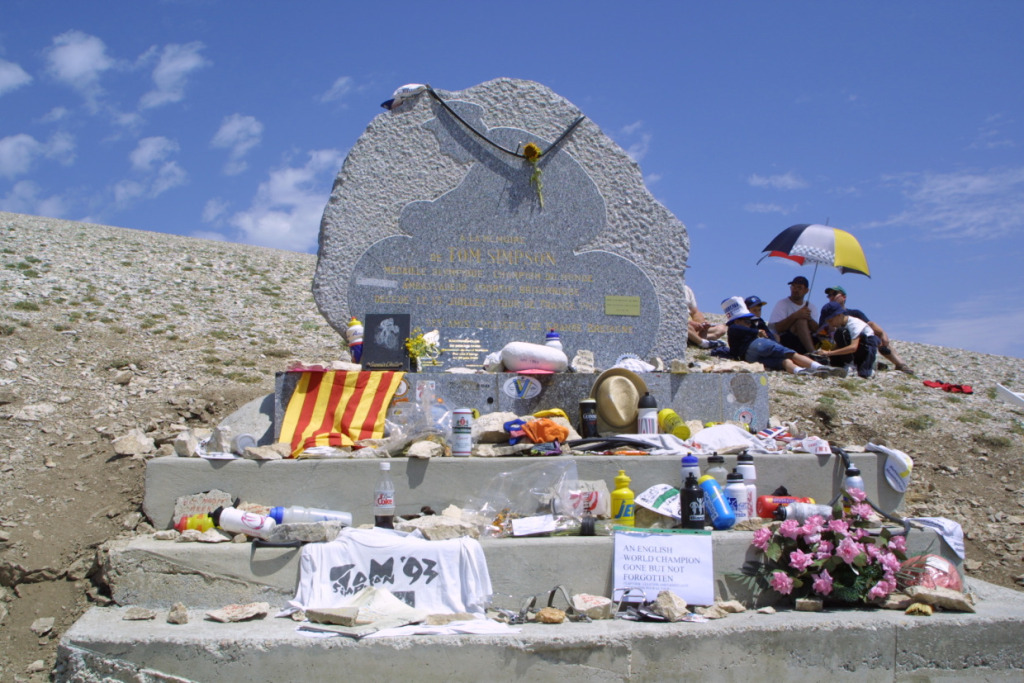
Even Eddy Merckx—the Belgian cyclist widely regarded as the greatest in the history of the sport—faced a crisis on Mont Ventoux. It was July 15, 1970, during the Tour de France. That day too, the race was struck by an oppressive heat wave. Despite being the top favorite, Merckx struggled immensely against attacks from rivals like Thévenet and Poulidor. In the end, he staggered to the summit, barely holding on.
Still, Merckx did not forget to remove his cap in respect as he passed the memorial to Tom Simpson, who had died during the race three years earlier. Simpson had been Merckx’s former teammate. “Even after that, the road to the finish was incredibly hard. I felt sick, I was suffocating, and I ended up being taken away by ambulance after the finish,” Merckx later recalled.
Having somehow survived Mont Ventoux, Merckx would go on to claim the yellow jersey in Paris. It is through moments like these that Mont Ventoux earned its reputation as “the mountain where the devil dwells.”
2. Planning a Route to Tackle Mont Ventoux
Stage 16 of the 2025 Tour de France finishes atop Mont Ventoux. The 171.5 km course starts in Montpellier and remains flat until the final stretch. But at the 149.2 km mark, the climb begins in Bédoin. From there to the summit, it’s a 22.3 km ascent with an average gradient of 9%, occasionally reaching 10%.
If you’re going to ride in France, there’s no reason to miss the chance to cycle this legendary peak.
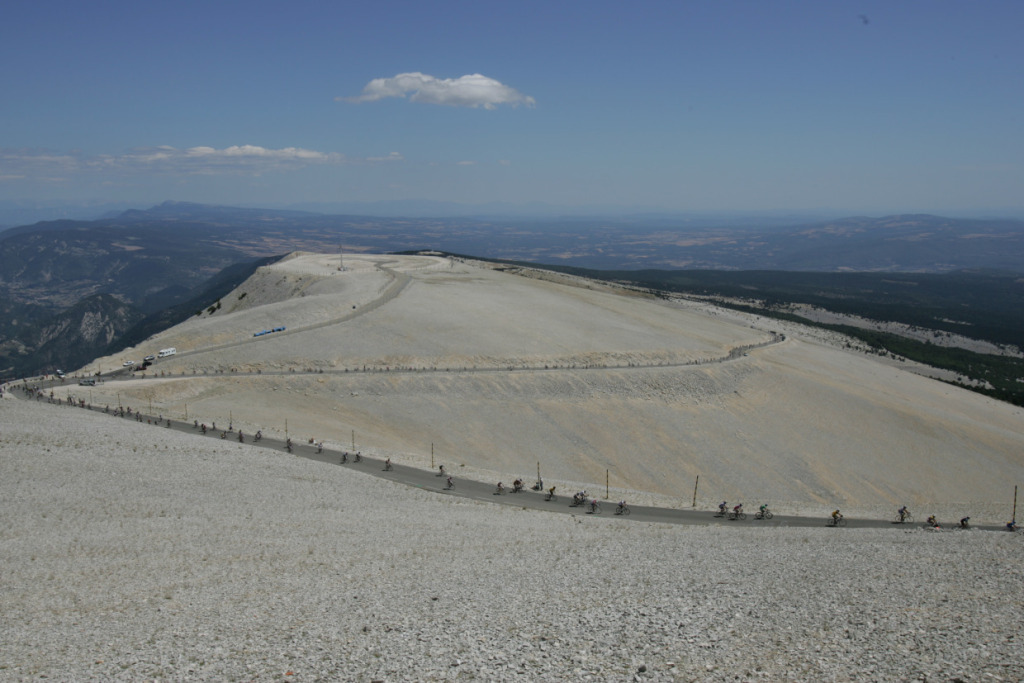
Since this is a climb that even Tour de France pros struggle with, you’ll need to rent a proper performance road bike. Should you go with the latest e-road bike powered by electric assist? Or opt for a lightweight traditional road bike? In Japan, rental bikes often have issues and aren’t very comfortable—but in France, can you get a well-maintained, up-to-date model? Do they have your size? What about pedals?
Following the method introduced in Part 1 for finding rental shops, I searched “Mont Ventoux, rental bike.” As expected from a cycling mecca, a long list of results came up. I visited the website of a rental shop based in Bédoin, located right at the foot of Mont Ventoux. Their homepage states: “Rent in four easy steps.”
1) Enter the desired rental dates.
2) Select the bike model, quantity, and size, and choose pedal type and whether you want a helmet rental (these are included in the price).
3) Choose whether you will pick up the bike at the shop or have it delivered to your hotel.
4) The total amount is displayed; then enter your name, email, and other details to complete the reservation. You will receive a confirmation email regarding availability.
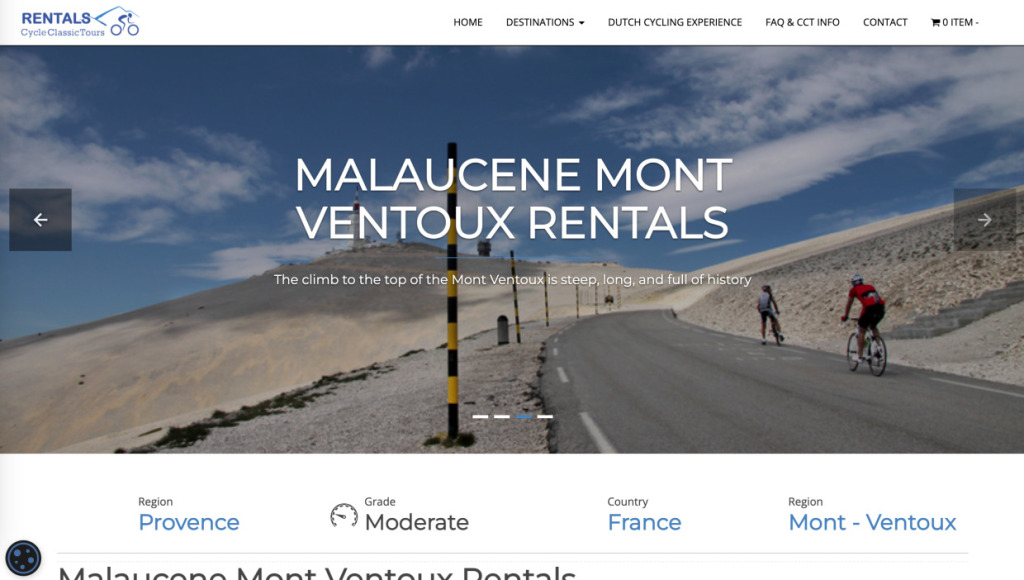
I tried it out as a test. The rental period was three days. The non-electric assist road bike offered was a LaPierre Xelius SL 7.0 Disc Di2. Sizes available were 50, 52, 54, 56, and 58, allowing you to select the appropriate size based on your height. After entering everything, the total came to €205 (about 35,000 yen). Upon submitting my name and email, I received a reply in English from the person in charge.
“We have it in stock. Would you like to make a reservation?” The response came by email, so from there on, detailed communication can continue via email. Fortunately, the replies were quick and polite. Since it’s a local bike shop, it seems you can also purchase accessories or have the bike set up as needed.
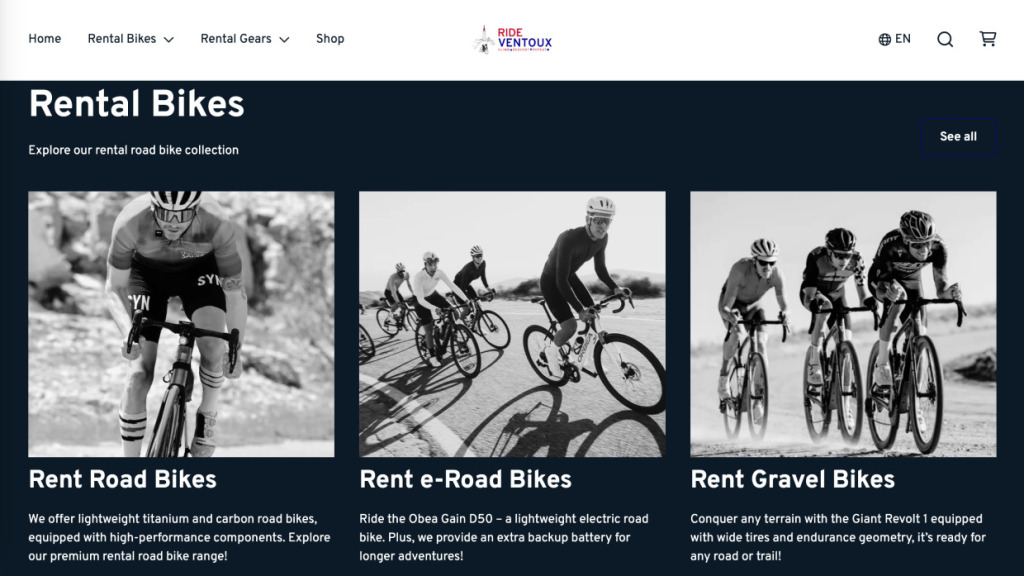
By the way, the available rental models include eMTBs, gravel bikes, e-road bikes, sport e-bikes, mountain bikes, and road bikes, with five different road bike models to choose from. It’s surprising that you can even rent a Pinarello Dogma F Dura-Ace Di2.
This system is almost the same as those offered by Giant and Specialized in Japan. Likewise, there are no extra fees for choosing pedal types or renting a helmet. Considering the cost, this rental option is quite reasonable when you factor in the expenses and effort involved in bringing your own bike from Japan.
3. Using a Hotel as Your Base to Explore the Area
When cycling to Mont Ventoux, key base cities include Avignon, famous for its “half-ruined bridge” over the Rhône River, and Orange, known for its Roman-era amphitheater. Closer to Mont Ventoux is Carpentras, a mid-sized town.
Most cyclists ascend Mont Ventoux from the east side, while Malaucène lies at the end of the western descent route. Bédoin is the smallest town but serves as the main starting point for the climb.
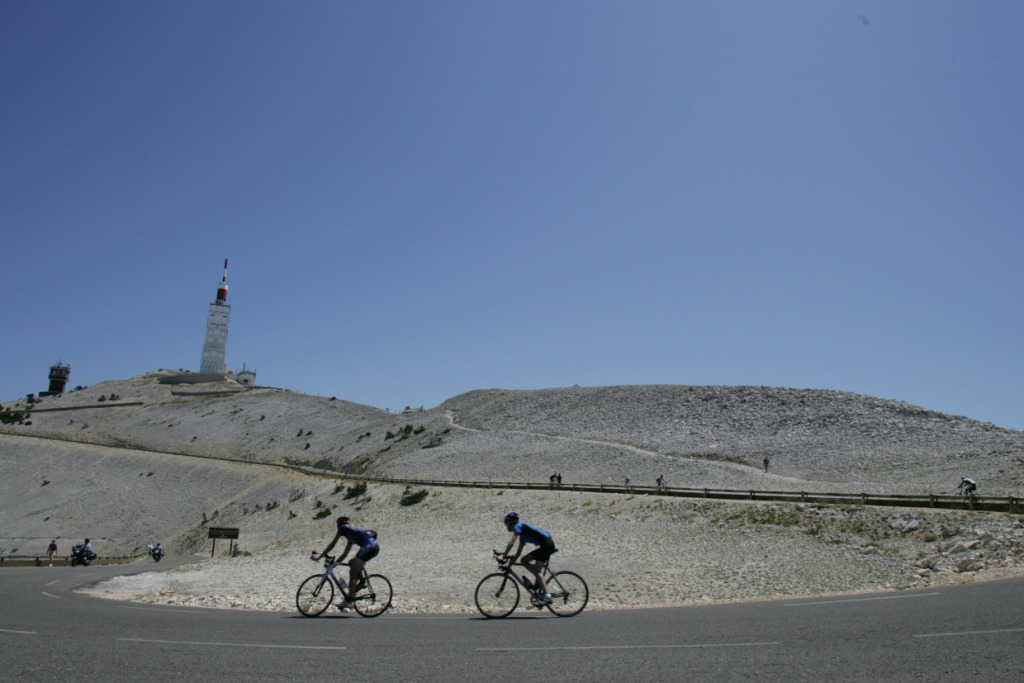
Of course, when tackling Mont Ventoux by bike, you can choose between two routes. The Tour de France uses the route from the southern base at Bédoin, ascending counterclockwise from the east side. Naturally, Tom Simpson’s memorial stone stands in the final kilometer. Riders who finish usually descend to Malaucène, which features relatively gentle curves and safe road conditions, making it perfect for a downhill ride.
If you have time to attack Mont Ventoux twice, climbing from Malaucène offers a different scenery and is well worth trying.
Staying several days at the foot of Mont Ventoux and using it as your home base to take day trips cycling in the mountains or visiting nearby attractions like Avignon is the classic French-style vacation.
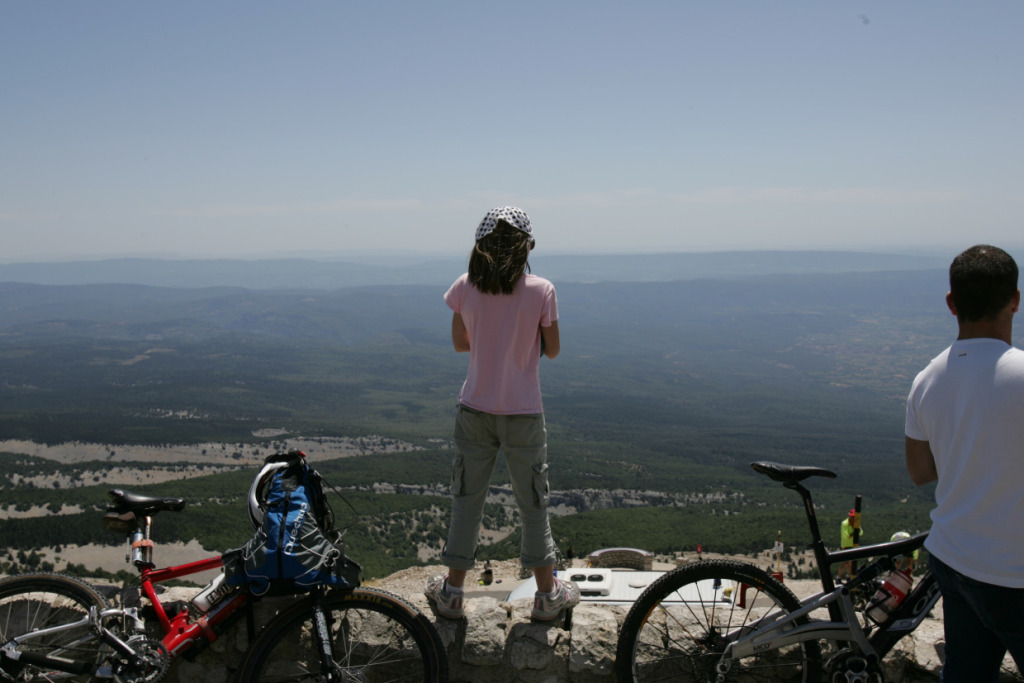
In recent years, riding e-MTBs has become a new source of enjoyment. A few years ago, the event “Grande Traversée du Vaucluse à VTT,” which crosses this area by mountain bike, was held. Dedicated routes for electric mountain bikes have also been created. Most of these routes are said to be manageable for riders of all skill levels.
4. What to Do When There Are No Vending Machines or Convenience Stores
Cyclists riding in France typically carry food in small backpacks or rear pockets. While it’s possible to stock up on snacks beforehand at supermarkets, these shopping centers are usually located near highway entrances and far from comfortable cycling routes, making it difficult to stop once on the road. Along the way, there are cafés where riders can take breaks and are welcome to use the restrooms, which is appreciated.
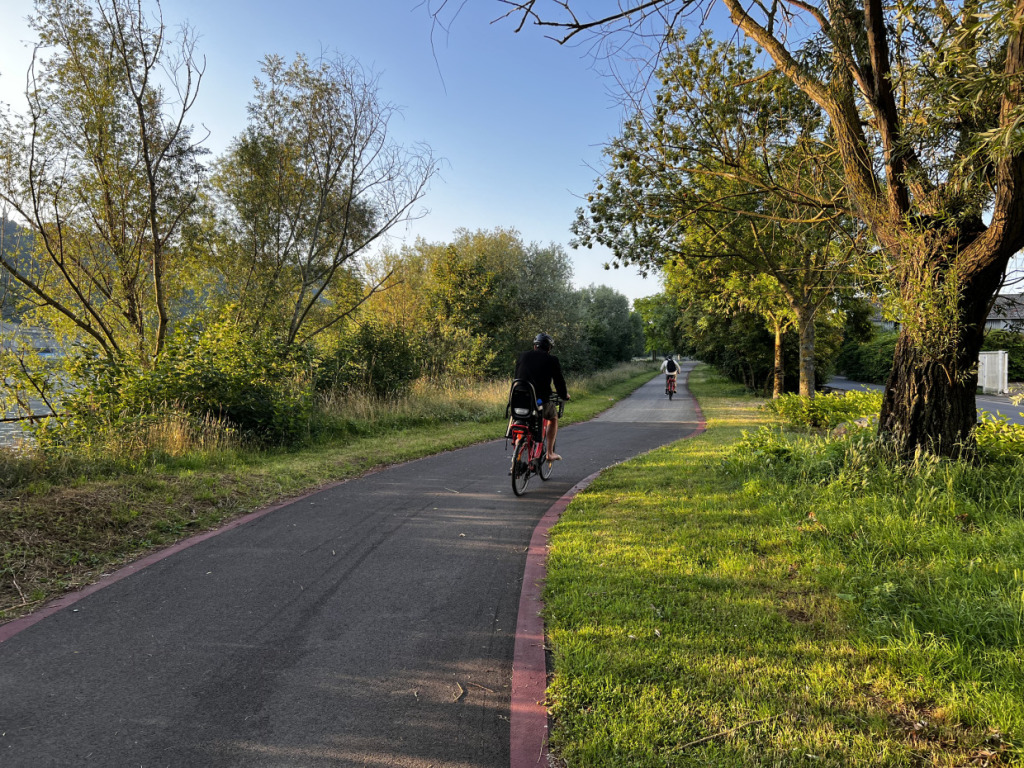
One thing to be careful about is the strong ultraviolet rays. It’s advisable to wear a summer long-sleeve jersey, use UV protection cream, and wear eyewear. If you have a GPS device, you can keep track of the distance and gradient to the summit. Using an eSIM or similar service to enable mobile data, just like you do in Japan, is recommended.
In France, red “N” routes on maps indicate national roads, which in some cases are autoroutes (motorways) reserved for cars. While it’s ideal if your map app has bicycle navigation, if it only shows routes for cars, it can be very dangerous. Therefore, it’s necessary to choose the yellow “D” routes, which are departmental roads. On these peaceful roads, you can also experience how much respect drivers have for cyclists.
5. Predictions for the 2025 Tour de France Winner
The Tour de France is now entering its final stages. The overall victory battle sees the top favorite, Tadej Pogačar, demonstrating the strength expected of him. However, the Tour de France is not only about competing for the yellow jersey. Since stage winners receive significant media coverage on TV and in newspapers, even a single stage victory becomes an invaluable achievement. At Mont Ventoux, dark horses will surely launch attacks aiming for a stage win, and it will be interesting to see how Pogačar and other favorites respond to these moves.
By attempting to ride the same course that Pogačar and others raced through, you can personally appreciate the greatness of the world’s top cyclists on your own terms. Riding through the beautiful French countryside, cutting through the wind, slight differences in cruising speed should be easily forgiven.
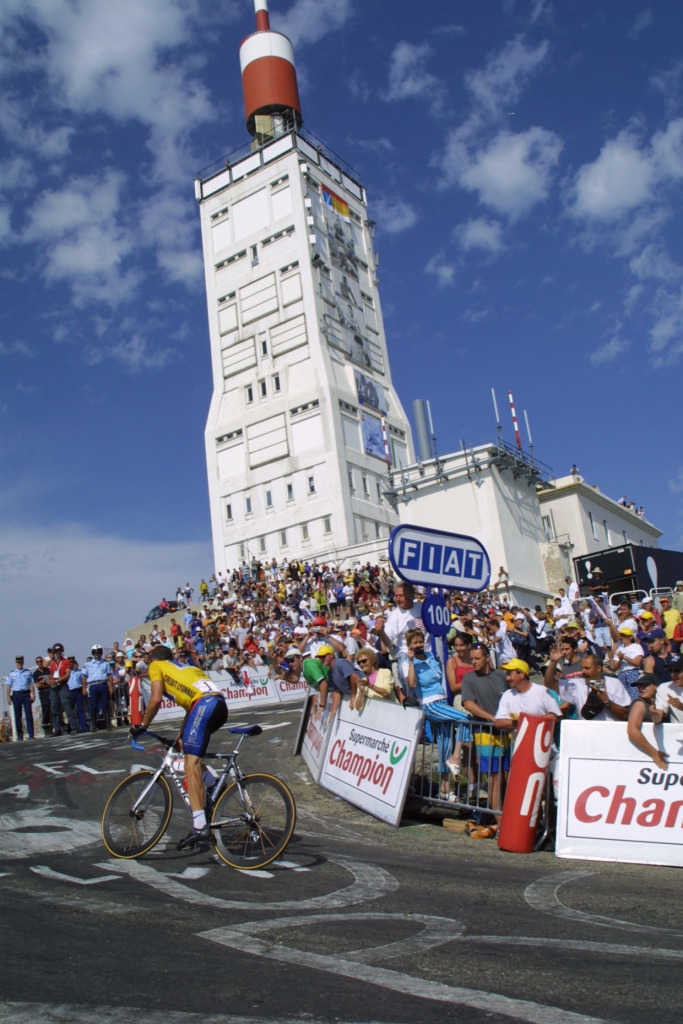
*This manuscript was written as of July 14, 2025.
Text_Kazuyuki Yamaguchi
Profile
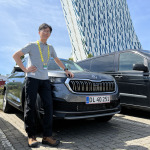
Kazuyuki Yamaguchi
A sports journalist with 30 years of experience covering the Tour de France. In addition to cycling, he has covered table tennis, track and field, rowing, and others, contributing articles to Tokyo Chunichi Sports among others. He has served in public relations roles for international cycling events held in Japan. His works include ‘Shimano: The Bicycle Parts that Conquered the World – From a Small Sakai Workshop to Global Standards’ (Koubunsha) and ‘Tour de France’ (Kodansha Modern New Books), both available as e-books. He studied French literature at Aoyama Gakuin University’s Faculty of Literature.